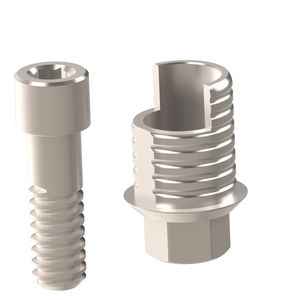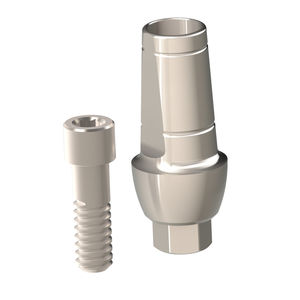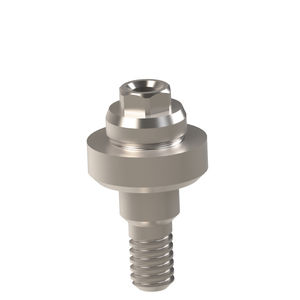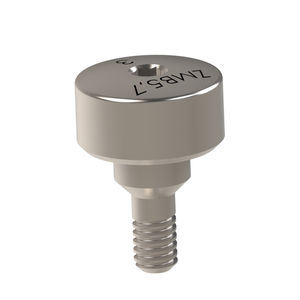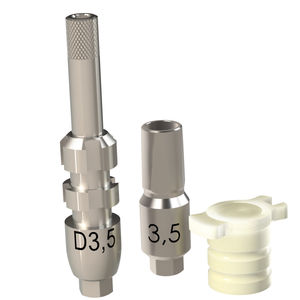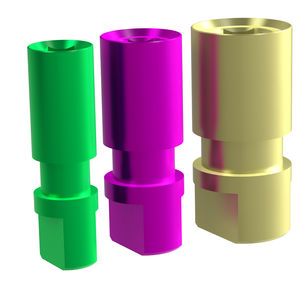
- Dental
- Dental practice
- Titanium implant abutment
- Heliocos GmbH
Titanium implant abutment Biohorizons®internal hexagonangledcemented
Add to favorites
Compare this product
Characteristics
- Material
- titanium
- Connection
- internal hexagon
- Configuration
- angled
- Other characteristics
- cemented
- Implant diameter
Min.: 3.5 mm
(0.14 in)Max.: 5.7 mm
(0.22 in)- Implant angulation
16 °, 25 °
Description
Angled abutment to match Biohorizons®. The angled abutment is made from a titanium alloy. This ensures excellent biocompatibility and high strength. The angled abutments are intended for a cemented restoration and are therefore secured against rotation. You can choose from different gingival heights (1 mm and 2.5 mm) and angles (16 ° and 25 °). The angled abutment is characterized by a high-precision connection. That is why we give a 30 year guarantee on the angled abutments.
The angled abutments are delivered with a definitive screw. The abutment screw is also made from a titanium alloy. You can continue to use your original instruments or use instruments from Heliocos. Angled abutment and abutment screw are supplied as a set. The parts are non-sterile and you must reprocess the products before use. Please refer to the Heliocos instructions in the instructions for use (Heliocos Downloads).
You can also order the appropriate instruments for the angled abutments to match Zimmer Dental® (hex driver).
Catalogs
Abutments by Heliocos
82 Pages
Heli-Loc overdenture abutments
13 Pages
Related Searches
- Implant abutment
- Titanium implant abutment
- Straight implant abutment
- Internal implant abutment
- Hexagonal implant abutment
- Screw implant abutment
- Angulated implant abutment
- Internal hexagon implant abutment
- Dental implant analog
- Straight dental implant analog
- External implant abutment
- CAD/CAM implant abutment
- Gingiva former
- Impression cap
- MUA implant abutment
- Dental driver
- Titanium gingiva former
- Cemented implant abutment
- Tapered implant abutment
- Wrench
*Prices are pre-tax. They exclude delivery charges and customs duties and do not include additional charges for installation or activation options. Prices are indicative only and may vary by country, with changes to the cost of raw materials and exchange rates.




